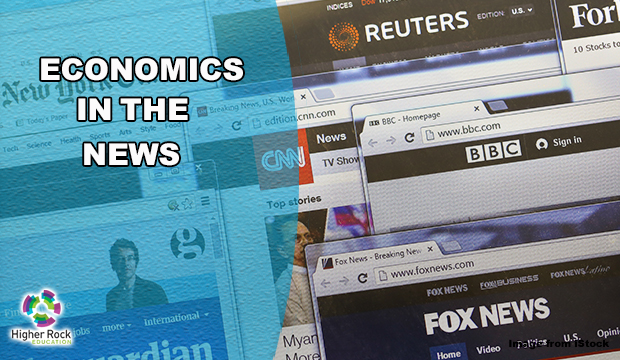Economics in the News – May 2-8, 2022
Economics impacts our lives every day. Below are some of the top storylines from this past week related to economics.
- The risk of electricity shortages across the United States is rising, according to power-grid operators. Experts say that power grids feeling the strain as the United States transitions from conventional power plants fueled by coal and natural gas to cleaner forms of energy. Electricity supplies aren’t keeping up with demand.
Wind and solar farms don’t produce enough electricity at all times and require large batteries to store their output for later use. With those batteries under development, power-grid operators warn that the availability of the batteries may not be fast enough to combat the closures of the traditional power plants. Power grids have become more vulnerable to fail due to age and an increase in severe weather, while the electrification of the home and the growth of electric vehicles have contributed as well. [The Wall Street Journal]
- During the height of the pandemic, many older Americans retired early. But new data by Indeed economist Nick Bunker shows that an estimated 1.5 million retirees have reentered the labor market. An estimated 2.4 million additional Americans retired than expected during the first 18 months of the pandemic.
Diminishing COVID-19 concerns, rising costs and more flexible work arrangements have lured many retirees back to work. Employers are having to go to greater lengths to attract and keep workers, including some businesses to specifically recruit early retirees. [The Washington Post]
- With a weakening global demand and a shutdown to fight an outbreak of coronavirus cases, China’s exports declined sharply in April. Demand for Chinese exports is stressed from high inflation and increased interest rates in the United States and other major markets.
After manufacturers were forced to shut down in Shanghai due to a COVID-19 outbreak, businesses and investors worry about the impact of China’s ‘zero-COVID’ strategy. A weakened China economy – the world’s second-largest – can have global repercussions, depressing imports of industrial components and consumer goods. [Associated Press]
- College athletes have benefitted on their name, image and likeness for the first time in the history of the NCAA since last year. While current NCAA rules prohibit name, image and likeness deals to function as a recruiting tool – coaches aren’t allowed to promise specific NIL deals – many schools are establishing the idea of “collectives.”
Collectives are supporters who operate outside the university and its athletic department, pooling financial resources of a university’s fan base and directing those funds to the student-athletes. Thirty-seven of the 65 schools among the Power Five – the ACC, Big 10, Big 12, SEC and PAC-12 – have setup at least one collective for their athletes. Twelve schools have multiple collectives. While collectives aren’t direct pay-for-play, many schools are utilizing the newest phenomenon as an indirect recruiting tool to lure athletes to their schools. [The Wall Street Journal]
- Inflation is at a 40-year high, but it impacts all consumers differently. What are your spending habits? What do you eat? How much do you travel? Take the New York Times inflation calculator to see your personalized inflation rate. [The New York Times]
